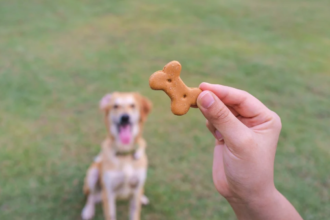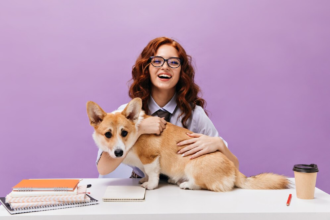As dog lovers, we know our furry friends can’t always tell us how they feel. Just like us, they experience anxiety, and recognizing the signs is crucial for their well-being. Whether it’s a thunderstorm, a crowded space, or separation from us, understanding our dog’s anxiety can help us provide the comfort they need.
Some signs of anxiety in dogs include excessive barking, restlessness, destructive behavior, or even changes in appetite. By observing these cues, we can begin to identify the specific triggers affecting our pets. Once recognized, addressing these stressors with effective strategies can make a big difference.
One increasingly popular option among pet parents is the use of cbd dog treats. These specially formulated snacks not only taste great to dogs but are also designed to promote relaxation and ease stress naturally. Many owners have found them to be a helpful addition to their dog’s anxiety management routine.
In this article, we’ll explore the common signs of anxiety in dogs and share effective strategies to help them cope. From behavioral changes to physical symptoms, we’ll guide you through identifying your pup’s stress triggers. With the right approach, we can create a calmer environment for our beloved companions.
Understanding Dog Anxiety
Understanding dog anxiety is essential for ensuring our pets’ well-being. Many factors can contribute to anxiety in dogs, and recognizing them helps us provide the necessary support.
Common Causes of Anxiety in Dogs
- Separation: Many dogs experience anxiety when left alone, often leading to destructive behavior.
- Loud noises: Events like thunderstorms and fireworks can trigger fear, causing stress responses.
- Changes in routine: New schedules or environments can unsettle dogs, making them anxious.
- Social interactions: Not all dogs are comfortable with other animals or people, leading to nervousness.
- Traumatic experiences: Past abuse or negative experiences can leave lasting emotional scars.
Signs and Symptoms of Anxious Behavior
- Excessive barking: Dogs may bark more frequently when anxious, signaling distress.
- Destructive behavior: Chewing on furniture or digging can indicate underlying anxiety.
- Pacing: Continuous movement can signify restlessness and discomfort.
- Hiding: Dogs may seek refuge in small spaces when feeling stressed or fearful.
- Changes in eating habits: Loss of appetite or overeating often accompanies anxiety.
Understanding these causes and symptoms enables us to better support our furry companions.
How to Tell If Your Dog Is Anxious
Recognizing anxiety in our dogs involves paying close attention to their body language and behavior. We can identify specific signs that indicate our pets may be stressed or anxious.
Observing Body Language
- Ears: Ears pulled back or flat against the head often signal fear or anxiety.
- Tail: A tucked tail may indicate discomfort; a stiff or high tail might mean agitation.
- Eyes: Wide eyes or averted gaze can express nervousness. Blinking or squinting may suggest uncertainty.
- Posture: Crouched or hunched posture often points to anxiety, while cowering indicates fear.
- Fur: Raised hackles may signal stress or readiness to defend themselves.
By observing these cues, we can better understand our dog’s emotional state and anticipate their needs.
Recognizing Changes in Behavior
- Vocalization: Increased barking, whining, or howling can signal distress.
- Destructive Behavior: Chewing furniture or digging can stem from anxiety, especially when left alone.
- Eating Habits: Changes in appetite, whether eating less or becoming fixated on food, may indicate anxiety.
- Sleep Patterns: Excessive sleeping or difficulty settling down can reflect heightened stress levels.
- Avoidance: Seeking solitude or hiding in unusual places may show our dog is coping with anxiety.
Identifying these behavioral changes can help us address their anxiety effectively.
What You Can Do About It

We can implement several strategies to alleviate our dog’s anxiety. Creating a calming environment and utilizing effective training techniques serve as key components in this process.
Creating a Calming Environment
We should strive to create a quiet and comfortable space for our dogs. Utilizing soft bedding, dim lighting, and familiar scents can promote relaxation. Incorporating background noise, such as white noise machines, masks sudden sounds that might trigger anxiety. We can also designate a safe haven, where our dogs can retreat during stressful situations. Keeping a consistent routine helps minimize stress, as dogs thrive on predictability. Additionally, using calming products like pheromone diffusers or anxiety wraps can further enhance the serene atmosphere, ensuring our dogs feel secure and relaxed.
Training Techniques to Reduce Anxiety
We can employ various training techniques to help reduce our dogs’ anxiety. Positive reinforcement training, focusing on rewarding calm behavior, encourages relaxation. Gradual exposure to anxiety-inducing stimuli can desensitize our dogs to these triggers. Implementing obedience commands, such as “sit” and “stay,” can foster a sense of control. Additionally, engaging in regular mental exercises, such as puzzle toys or scent work, can reduce stress by stimulating our dogs’ minds. Consistency and patience play crucial roles in reinforcing these techniques, ultimately leading to a more confident and relaxed canine companion.
Seeking Professional Help
Recognizing when to seek professional help is crucial for addressing our dogs’ anxiety effectively. Consulting a veterinarian or a professional behaviorist can provide us with tailored strategies to manage our pets’ stress.
When to Consult a Veterinarian
We should consult a veterinarian when behavioral changes occur that may signal underlying health issues. If our dog experiences sudden anxiety or exhibits destructive behavior, a vet’s assessment can rule out medical conditions. Signs that warrant a visit include significant appetite changes, lethargy, or excessive vocalization. Additionally, if anxiety persists despite our efforts or escalates, obtaining professional guidance ensures our furry companion receives the appropriate care.
Behaviorists and Trainers
We benefit from engaging with certified dog behaviorists or trainers, especially if our dog’s anxiety stems from specific triggers. Professional behaviorists can analyze our dog’s behavior, provide insights, and create a customized training plan. They often employ techniques like desensitization and counter-conditioning, tailored to individual needs. When selecting a trainer, verifying credentials from reputable organizations, such as the Association of Professional Dog Trainers, ensures we receive quality guidance. Learning from experts enhances our ability to support our dogs in overcoming anxiety. For more insights on canine behavior, check out the resources from the American Kennel Club.













